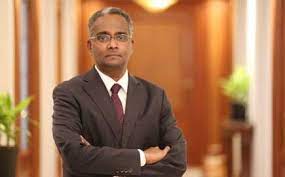When Murali Ramakrishnan took guard at South Indian Bank as managing director and CEO, he had to battle against legacy corporate loans which had turned non-performing, clean up the books and build a new credit profile.
The year was 2020 and the month was October. The coronavirus pandemic had already started crippling India’s economy. There was no corporate credit demand and growth was on brakes.
The Kerala-based private lender slipped into net loss of Rs 92 crore in the October-December quarter of FY2021 as non-performing assets (NPAs) got recognised. The loss peaked at Rs 187 crore in the second quarter of FY2022, followed by another negative quarter of Rs 50 crore.
“These were the quarters when the Reserve bank of India (RBI) had directed the bank to provision for its legacy bad loans. We went ahead and did an aggressive provisioning to cover all the losses,” Ramakrishnan told Indianbankingnews.com.
The tide turned in the next two quarters when the bank posted profit of Rs 272 crore and Rs 115 crore, respectively. Ramakrishnan expects profit for the full-fiscal to be higher than FY2022’s figure of Rs 45 crore, backed by expanded credit growth and better asset quality.
While addressing the NPA issue, Ramakrishnan cherry-picked quality assets to build a loan book. Risk mitigation was not new to him as he had headed that portfolio earlier at ICICI Bank. He knows how to stack up the loan book without them slipping into soured loans.
In the less than two years that he has been at South Indian Bank, Ramakrishnan has built a new loan book of Rs 27,787 crore where the NPA is just 0.02% or Rs 8 crore. As of March-end 2022, the bank had a total credit size of Rs 61,816 crore, with the old loan book outstanding before 1 October 2020 being at Rs 39,064 crore.
“We achieved record disbursements of Rs 24,533 crore in FY2022, led by corporate loans of Rs 10,247 crore and gold of Rs 7,998 crore.There are zero slippages and SMA 2 in the new corporate book,” said Ramakrishnan.
When Ramakrishnan took charge, the loan book of Rs 36,917 crore had only 57% to A+ rated clients. “Now about 93% of the new loan book is to A+ rated clients,” he said. “This is an incredible jump. We have succeeded in changing the credit profile so that the NPA issues are negligible.”
Of the bank’s total loan outstanding, gross NPAs stand at Rs 3,799 crore. Out of this, Rs 3,793 crore is from old loans preceding Ramakrsihnan and only Rs 6 crore is from the new book that he has built for the bank. The gross NPA ratio has fallen to 5.87% during the June quarter of 2022, from 8.02% a year ago. Net NPA declined to 2.87% versus 5.05% a year earlier.
“We want to bring down our gross NPA closer to 5% and net NPA to below 2% in the current financial year,” said Ramakrishnan.
Making the loan book more granular was a key part of the strategy. The average ticket size of loans was brought down to Rs 14 lakh, from Rs 17 lakh at the end of 30 September 2020.
The bank is targeting a double-digit growth in advances this financial year. The gross corporate loans grew by Rs 12,548 crore, gold loans by Rs 2,978 crore and retail by Rs 284 crore. “As liquidity tightens, we see more opportunities coming from the corporate side, particularly from pharma, manufacturing, chemical and construction sectors,” said Ramakrishnan.
On the retail side, the bank wants to grow across all segments except in mortgage loans. “We need more feet on the street to make our mortgage loans really take off. It also requires special skill sets,” said Ramakrishnan.
South Indian Bank has issued over 100,000 credit cards with monthly average spends of Rs 21,344. As of June 2022, the outstanding book for credit cards, which was launched in the previous fiscal, is Rs 330 crore.
On the deposit side, Ramakrishnan plans to up the CASA (current account savings account) ratio to 36% from the current 34%.
“Steady improvement in CASA ratio to 34% vs 30.4% in Q1FY22, and bulk-deposits down 63% YoY, reflect South Indian Bank’s liability strength. While asset quality continued to improve for five straight quarters, NNPL remained elevated at 2.9%. Standard restructured book too reduced to 3.5% as of June 2022 from the peak of 4.5% in December 2021. However, total stressed pool GNPL + restructured book remained elevated at 9.4%,” ICICI Securities said in a report.





